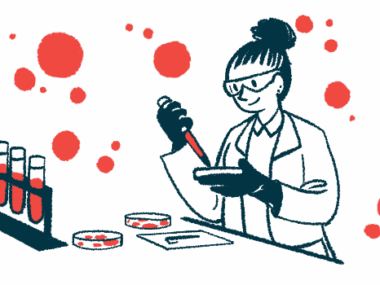Recalling when my child’s vomiting wasn’t just a ‘minor inconvenience’
We once had to choose between a feeding tube and emergency room visits
Written by |

Mornings in our house are always a bit like a relay race — with the occasional baton drop. Last week, as my wife, Judy, and I were preparing for our day as educators — the final leg of this “parental marathon” being getting our daughter, Rylae-Ann, ready for school — I bent down for a sweet morning hug and received an unanticipated “gift” in return, a spectacular display of projectile vomit right down my clothes.
Rylae-Ann is 6 now and it’s been almost five years since she had gene therapy to treat her rare disease, aromatic l-amino acid decarboxylase (AADC) deficiency. These days, most of her severe symptoms have faded and we’re left with the typical challenges of parenting, such as the occasional wardrobe catastrophe. As I trudged upstairs to change, I couldn’t help but think back to when vomiting wasn’t such a minor inconvenience.
Frequent vomiting meant making a difficult decision

Rylae-Ann Poulin, 6, enjoys a snack. Five years after gene therapy to treat her AADC deficiency, she is able to eat independently and maintain a healthy weight. (Photo by Richard E. Poulin III)
When Rylae-Ann was a newborn, vomiting was a much bigger issue. She had trouble nursing because her muscles were weak, and every feeding was a marathon in itself. She’d latch on, but tire out after just a few sips. Her weight started to drop, so Judy and I devised a plan: more small feedings more often. Judy would pass me our tiny bundle and I’d carefully spoon-feed her breastmilk. It was a delicate dance because her swallowing muscles were weak and, more often than not, the milk would end up sliding down her throat like a slow river, or worse, all over her clothes.
It wasn’t long before I earned my first parenting badge of honor, the vomit badge. I’d accidentally given her too much too fast and she responded with a cascade of milk right back at me. It felt like some cruel initiation into parenthood.
The frequent vomiting, along with her difficulty feeding, caused her weight to plummet, so her doctors suggested a feeding tube. The thought was terrifying. A feeding tube meant inserting a thin line through her nose directly into her esophagus to bypass the risk of her aspirating vomit into her lungs. Judy and I were faced with a brutal reality: inserting a tube down our daughter’s nose and taking extra time for feeding or risking emergency room visits and the potential of even worse consequences. We were beside ourselves.
In the end, we decided to give it one more month. If we couldn’t get her weight up, we’d go with the feeding tube. Judy and I became pros at spoon-feeding, and while there were still a few mishaps (and more vomit badges), we eventually got it right. By the end of the month, Rylae-Ann was gaining weight and we avoided a feeding tube.
Fast-forward five years and, while the occasional vomit attack still happens, it’s not the emergency it once was. In fact, Rylae-Ann handled this morning’s little incident much better than I did; she was already dressed and ready for her day while I was still wringing out my shirt. I kissed her forehead and wished her a happy day at school. With a cheerful “Bye, Daddy,” she was off.
As I stepped out the door, I couldn’t help but chuckle. Vomit was once a life-threatening concern, but now it’s just another bump in the road. That’s something to be thankful for in its own messy way.
Note: AADC News is strictly a news and information website about the disease. It does not provide medical advice, diagnosis, or treatment. This content is not intended to be a substitute for professional medical advice, diagnosis, or treatment. Always seek the advice of your physician or other qualified health provider with any questions you may have regarding a medical condition. Never disregard professional medical advice or delay in seeking it because of something you have read on this website. The opinions expressed in this column are not those of AADC News or its parent company, Bionews, and are intended to spark discussion about issues pertaining to aromatic l-amino acid decarboxylase deficiency.







Leave a comment
Fill in the required fields to post. Your email address will not be published.